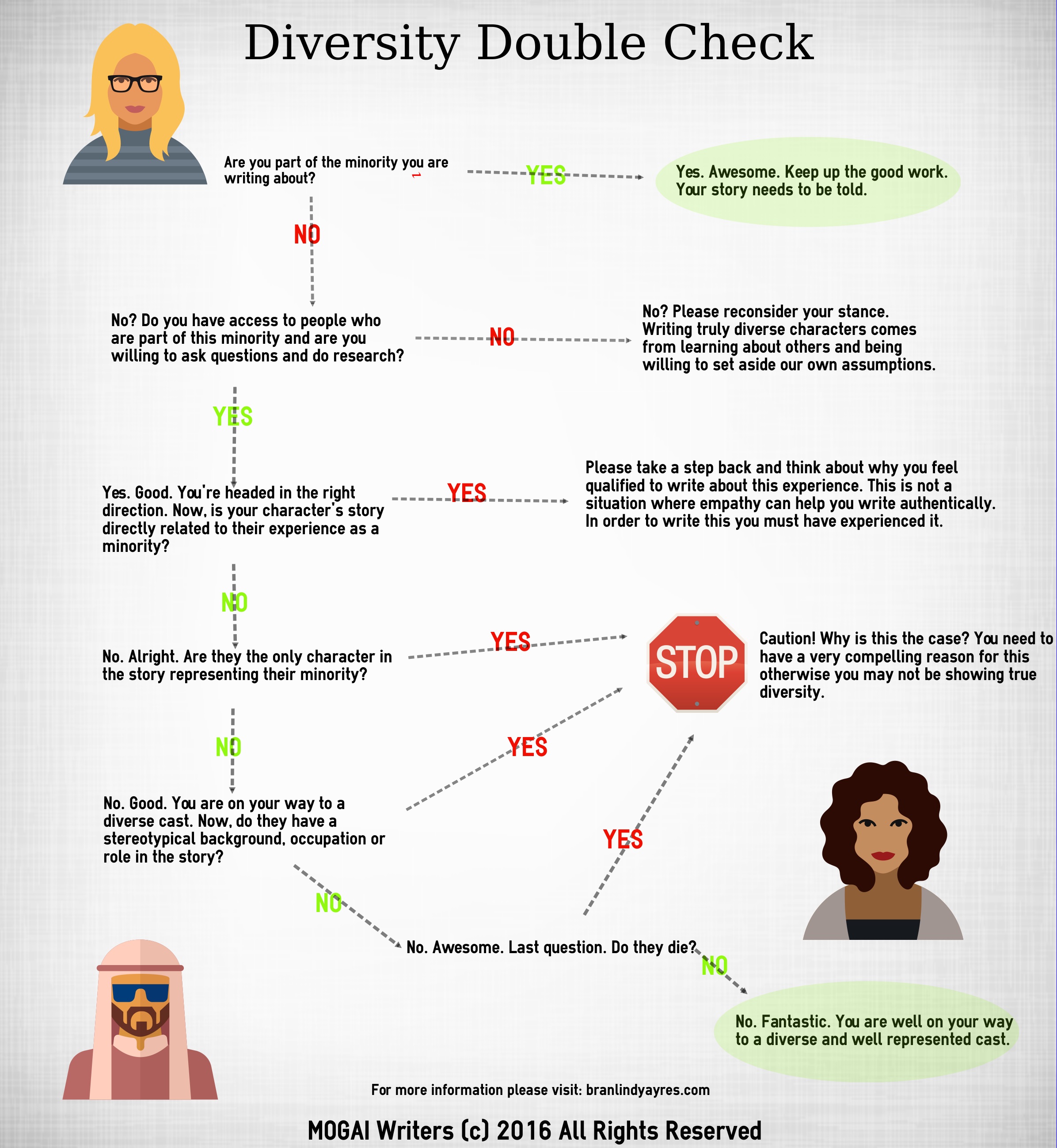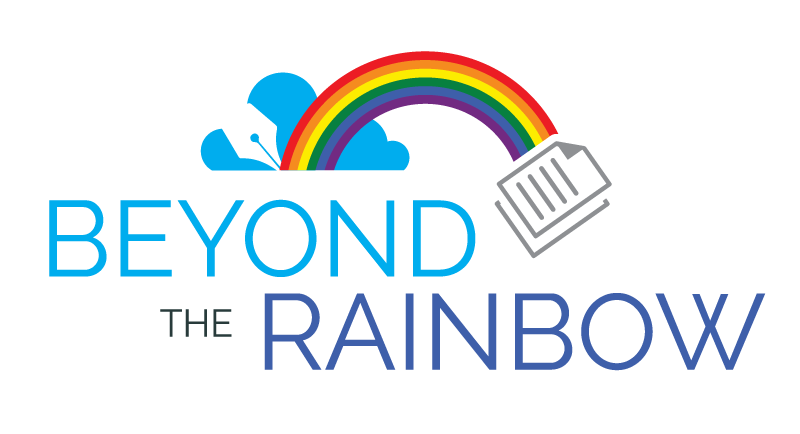by Bran L. Ayres
Ever since BookCon 2014 diversity has become one of the new buzz words around the publishing industry and among writers. The #WeNeedDiverseBooks tag showed a massive outpouring of support and desire for diversity in children’s books. While at the time the movement was primarily focused on cultural diversity it has grown over the last couple of years to reflect the need for all kinds of diversity; racial, physical ability, mental illness, sexual orientation and gender identity, and not just in children’s books. While this has been needed for years and nearly everyone you meet acknowledges this to some degree, there has been some push-back. Some authors felt as though they were being forced to write characters that might not fit their stories.
Thus came the rise of tokenism, diversity quotas and many instances of misrepresentation as well meaning authors attempted to correct their lack of diversity. Others refused to add diverstiy, citing the fear of getting it wrong. While the We Need Diverse Books campaign is crucial in highlighting where the industry lacks, it has not helped authors write more diversely.
Writing with diversity is something that every author should strive for. Yet, there isn’t much out there to show you how to do so. I’ve mentioned before, there are some stories that are not ours to tell. Jami Gold had a very helpful blog post about writing more diversely and I myself have written about it in the past. Yet there still seems to be a lot of confusion about what it means and how to go about it.
Especially how to go about it.
So, to that end I’ve developed a worksheet that you will hopefully find helpful in writing more diversely without falling back on stereotypes or feeling as though you’re just filling a perceived quota. The following info graphic is a shorthand version of the worksheet and is something I hope you’ll find both useful and educational.

The Diversity Double Check (Info-graphic text)
Are you part of the minority you are writing about? Yes or no?
Yes. Awesome. Keep up the good work. Your story needs to be told.
No? Do you have access to people who are part of this minority and are you willing to ask questions and do research? Yes or no?
No. Please reconsider your stance. Writing truly diverse characters comes from learning about others and being willing to set aside our own assumptions.
Yes. Good. You’re headed in the right direction. Now, is your character’s story directly related to their experience as a minority? Yes or no?
Yes. Please take a step back and think about why you feel qualified to write about this experience. This is not a situation where empathy can help you write authentically. In order to write this you must have experienced it.
No. Alright. Are they the only character in the story representing their minority? Yes or no?
Yes. Caution! Why is this the case? You need to have a very compelling reason for this otherwise you may not be showing true diversity.
No. Good. You are on your way to a diverse cast. Now, do they have a stereotypical background, occupation or role in the story? Yes or no?
Yes. Caution! Why is this the case? You need to have a very compelling reason for this otherwise you may not be showing true diversity.
No. Awesome. Last question. Do they die? Yes or no?
Yes. Caution! Why is this the case? You need to have a very compelling reason for this otherwise you may not be showing true diversity.
No. Fantastic. You are well on your way to a diverse and well represented cast.
The questionnaire worksheet was created to help you ensure your story is diverse without resorting to tokenism or filling a perceived quota. You might find the answers to some questions uncomfortable. All this means is that you’ve uncovered internalized bigotry. This is not a reflection on you, but on the culture and society in which you’ve been raised. Knowledge is the first step to overcoming this perceived default state.
Even those of us who are part of a minority often find ourselves defaulting to white straight cis-gendered characters simply because this is what we see the most. It will take work to overcome this. The diversity worksheet will help you find ways to incorporate diversity into your story—not effortlessly—but hopefully, seamlessly.
It will start you off with big picture questions about your story as a whole, from there it will take you to character specifics to help you better grasp the ways in which to reflect diversity. Lastly, there are a couple of exercises to help you get your muse used to the idea of writing diverse characters. This is not a quick fix thing. You will have to work at this, just like any other aspect of writing. It will take practice and you are going to make mistakes. It is part of learning and being a writer. But, I know you can do it and it will be awesome.
(This article was first published on Bran Ayres personal blog on July 31, 2016).

